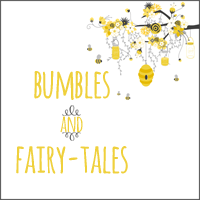Welcome to the HAPPY MAMAS Blog Tour...
"A perfect ode to motherhood!"
 |
| Hosted by TheChildrensBookReview.com |
by Kathleen T. Pelley
Illustrated by Ruth E. Harper
Release date: October 10th, 2016
Published by CWLA Press
Genre: Children ages 3 - 6
Format: Hardcover
SUMMARY
A lyrical read aloud that pays tribute to mothering in the animal and human kingdoms.
Charming illustrations depict activities that bring joy to a mama and her baby over the course of a day: feeding her little ones bundles of bamboo shoots; teaching her calf hot to trumpet a loud jungle cheer; playing peek-a-boo; watching her little ones fly from the nest; singing a serenade to the man in the moon; or crooning owly lullabies through the deep dark woods. But as the moon glows and the stars shine, what is it that makes all mamas - from desert jungle, from forest to field, from land to sea - happiest by far?
Mamas and babies everywhere will delight in this happy romp - a perfect ode to motherhood.
Perfect for one on one sharing or for use in the classroom.
GUEST POST
Importance of having
a Spanish version of Happy Mamas
We Celts love our circles – long ago we worshiped the moon
and the sun, we sat in a circle to tell our stories, and when St. Patrick
brought us Christianity, he took our beloved circle and placed it around the
Christian cross, giving us the Celtic cross.
Most stories are circular too in
their structure – that last page will often circle back to some character,
scene, or concept from the first page, and reveal some shift or change that has
taken place. And of course, just as circles
are seen as ways of connecting, so too are stories: stories connect us to other
cultures, to other places, to other people and even to our ancestors and
descendants. That is why they are such
an effective way of teaching children compassion and empathy: stories allow
children to see the world through another’s eyes, to touch it with another’s
skin, or to feel it with another’s heart.
But before children can relate to other cultures, they need to
develop a strong connection to their own, which means they need to see
themselves reflected in the stories that are read to them. In this way, they can develop a strong sense
of pride and honor about their heritage, language, and traditions. From my own experience of growing up within a
Scots/Irish culture (I was born and raised in Scotland, but spent most of my
summers on my grandparents’ farm in Ireland) that was often undermined by the
overall dominant English influence, I can totally relate to this need for
honoring one’s own language and traditions.
Back in those days, the only kind of accent heard on radio or
television, was the “Queen’s English.”
Scottish or Irish accents were branded as uneducated or inferior, and it
was not until fairly recently, that the trend came full circle and now these
regional accents are much more in vogue.
Later, when I came to
America, I experienced a certain loss of my cultural identity that is common
amongst many immigrants. I craved time
with other Scots/Irish people – our accent and dialect, our traditions and
common cultural roots gave us an immediate and lasting bond. When I visit children in schools, they love
to learn about the differences between Scots English and American English, and
delight in some of our lovely Scottish sayings such as, “Lang may Yer Lum reek”
or “the best laid plans o’ mice and men gang aft aglae.” I like to show children how our language is
so tightly connected to our identity and how this explains the need for a new
American dictionary that came into existence after the American Revolution.
Of course, some may argue the danger of immigrants who
maintain strong ties to their native land, is that they will never totally
assimilate into their host country.
However, I think the opposite is true: when children have a strong bond
to their native land, it can help them be more open to learning about the culture
where they live and so ultimately strengthens their sense of belonging to two
cultures.
As we know, this sense of not belonging is at the root of
many or our societal woes, but when I talk to children about writing, I explain
that sometimes we can actually use this feeling of not belonging to help our
writing. William Trevor, the Irish novelist,
who was one of those rare breeds – a Protestant living in the south of Ireland
(predominantly Catholic), attributed his literary success to his experience of
always being “other” and not belonging.
As I tell children, when you come from another land, it is easy for you
to observe things that the native people cannot see, and so it helps you to
become a better writer.
In recent years there has been much discussion in the
publishing world about the need for diverse books. Rudine Sims Bishop noted, “When children
cannot find themselves reflected in the books they read, or when the images
they see are distorted, negative, or laughable, they learn a powerful lesson
about how they are devalued in the society of which they are a part.”
Again, from my own experience of over twenty years of reading picture
books to children – Kindergarten – 8th grade at an inner city school
serving the Hispanic community, I witnessed this phenomenon first hand. Over and over again, when I managed to find a
wonderful picture book, featuring Spanish speaking characters or depicting some
aspect of life in Spanish speaking countries, I could see the children
literally sitting up in their seats, saucer eyed and mouths agape. Their
excitement at connecting to these characters was palpable. The perennial favorite for all grades from 1st
-8th was The Quiet Place by Sarah Stewart and David Small, featuring
a little Mexican immigrant girl in the 1950’s.
No wonder then, when I heard my Happy Mamas was also going to be a Mamis
Felices, I was a very Happy Author!
Picture books are meant to be read aloud – they should be a veritable
auditory feast filled with fresh, juicy, alliterative words, onomatopoeia, and
rhythmic, playful language – all the better to enchant young readers into an
early love of literature. The first
sound a child hears in the womb is the beat of the mother’s heart and so
naturally we humans feel soothed and lulled by rhythmic patterns be it the
pitter patter of rain, the click clack of knitting needles, the tick, tock of a
clock, or the lovely lilt of a tale well told.
I fell in love with stories
before I could read or write, by listening to them – on the radio, around the
peat fire in my grandparents’ farmhouse, and later on, when we finally acquired
a television in our house, from the voice of Roald Dahl himself reading aloud
Charlie and the Chocolate Factory – yes, really! When I write a story or read it aloud, I want
to bask in the beauty of words and the wonder of language.
So, imagine my delight, when we found our talented translator, Gloria
Garcia Diaz, an immigrant from Mexico, and translator of acclaimed author,
Laura Resau’s book Star in the Forest.
Now, I have to admit, I can speak only a small smattering of Spanish,
but like most Scots educated people, I did study French, German, and Latin all
the way through high school, and even continued with my Latin through
university. All of that to say, I know
enough about the translating process to understand that a good translation,
especially of a children’s picture book, requires a translator who is willing
to breathe her own life and love into the text, and thus retain the rhythmic,
playful language that makes it a joy to read aloud for any parent. Gloria’s labor of love now means that Mamis
Felices will have a wider circle of children and parents who can enjoy this
book and celebrate a Mama’s love.
Newbery Award winning author, Katherine Paterson, maintains that in
every children’s book there should be “the wonder of language and the wonder
behind and beyond the story that ties us to the mystery of the meaning of our
lives and all of creation.”
And that is the magic of literature – it links us together, like letters
in a word, or words in story no matter our race, culture, religion, age, or
language.
Gracias, Gloria for our Mamis Felices!
·
Lang may yer lum reek – old Scottish blessing for newly married couple,
meaning long may your chimney smoke – may you always have enough money to put
wood in your fire!
·
The best laid plans o’ mice and men gang aft aglae” the best laid plans of mice and men often go
awry- from Rabbi Burns, Scottish Bard, To a Mouse.
Rudine Sims Bishop’s article, 1980 “Mirrors,
Windows, and Sliding Glass Doors.” http://weneeddiversebooks.org/mission-statement/
GIVEAWAY
- Enter to win an autographed 6 picture book prize pack from acclaimed author Kathleen Pelley. The prize pack includes finger puppets, adorable stuffed animals, and HAPPY MAMAS.
One (1) grand prize winner receives:
Three (3) runner-up prize winners receive:
(Bumbles and Fairy-Tales will not be held responsible for any lost, unclaimed, damaged, etc. prize(s).)
ABOUT THE AUTHOR - Kathleen T. Pelley
Kathleen Pelley was born in Glasgow, Scotland, but spent most of her childhood summers playing on her grandparents' farm in Ireland. Her passion for stories stemmed from listening to them on the raiio during the BBC children's story hour. Later, her gentle Irish father fanned the flame even more by feeding her his tales of fairies, leprechauns, and banshees.
So much did Kathleen love stories, that off she went to Edinburgh University and earned a degree in HISTORY. She didn't much care for all the facts and dates and numbers, but how she loved the stories of Rasputin, Napoleon, and Bonnie Prince Charlie! One character in particular captured Kathleen's imagination - Florence Nightingale. After completing her degree, Kathleen studied to become a children's nurse, but it was brief and disastrous dalliance. For much as Kathleen loved children, she did not like to see them sick and suffering. However, decades later, Kathleen now sees herself as a kind of a nurse, because she believes that stories can heal the hurts in our hearts.
As a former elementary teacher, Kathleen enjoys sharing her passion with people of all ages. She has been a regular speaker at Regis University on "Nurturing a Passion for Stories," makes frequent presentations at schools and conferences, and has been telling stories at an inner city elementary school for the past 20 years. She believes that one of the best ways to teach our children empathy is through stories that help them "walk a mile in another man's moccasins." When she's not reading, writing, telling, or listening to stories, Kathleen enjoys knitting, Scottish music, and hiking with her husband and two Golden Retriever dogs along the trails of sunny Colorado.






























What a wonderful, wise post! Beautifully said, Kathleen!
ReplyDelete